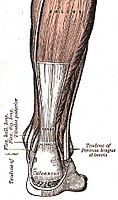
Photo from wikipedia
Formation damage usually occurs in near-well regions for injection wells completed in offshore oilfields under the development of line drive patterns. However, current works on characterizing the damage by well… Click to show full abstract
Formation damage usually occurs in near-well regions for injection wells completed in offshore oilfields under the development of line drive patterns. However, current works on characterizing the damage by well test analysis were basically focused on using single-phase analogy to solve two-phase flow issues, resulting in errors on the diagnosis and interpretation of transient pressure data. In this paper, we developed a two-phase model to simulate the pressure transient behavior of a water injection well in a multiwell system. To solve the model more efficiently, we used the finite volume method to discretize partially differential flow equations in a hybrid grid system, including both Cartesian and radial meshes. The fully implicit Newton-Raphson method was also employed to solve the equations in our model. With this methodology, we compared the resulting solutions with a commercial simulator. Our results keep a good agreement with the solutions from the simulator. We then graphed the solutions on a log-log plot and concluded that the effects of transitional zone and interwell interference can be individually identified by analyzing specific flow regimes on the plot. Further, seven scenarios were raised to understand the parameters which dominate the pressure transient behavior of these flow regimes. Finally, we showed a workflow and verified the applicability of our model by demonstrating a case study in a Chinese offshore oilfield. Our model provides a useful tool to reduce errors in the interpretation of pressure transient data derived from injection wells located in a line drive pattern.
Journal Title: Geofluids
Year Published: 2021
Link to full text (if available)
Share on Social Media: Sign Up to like & get
recommendations!